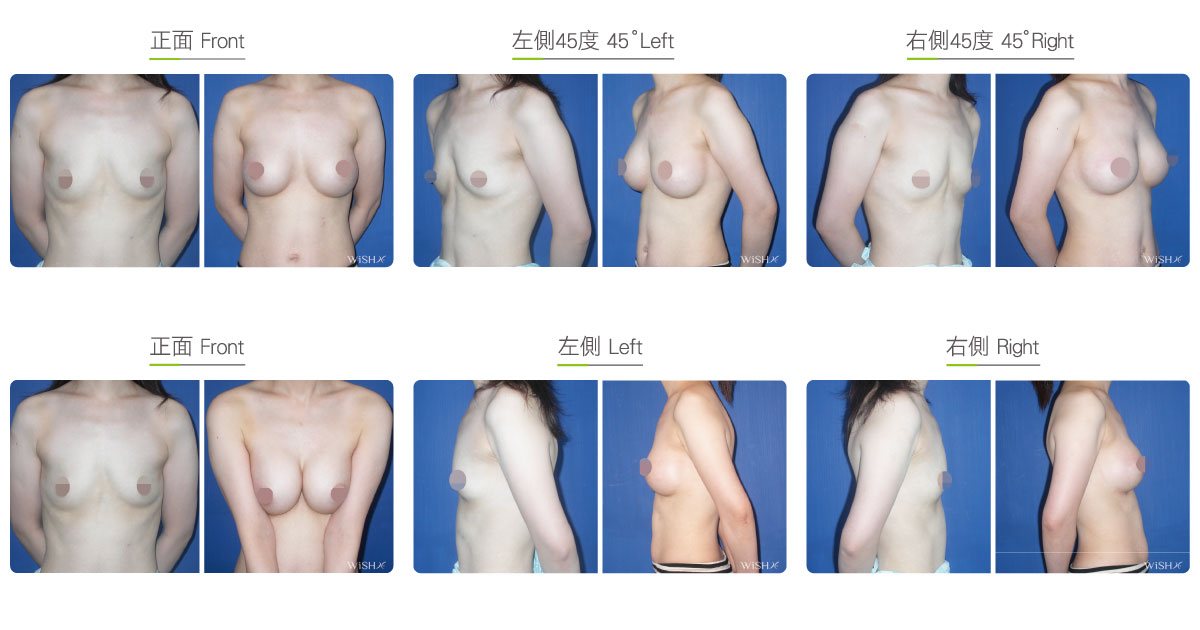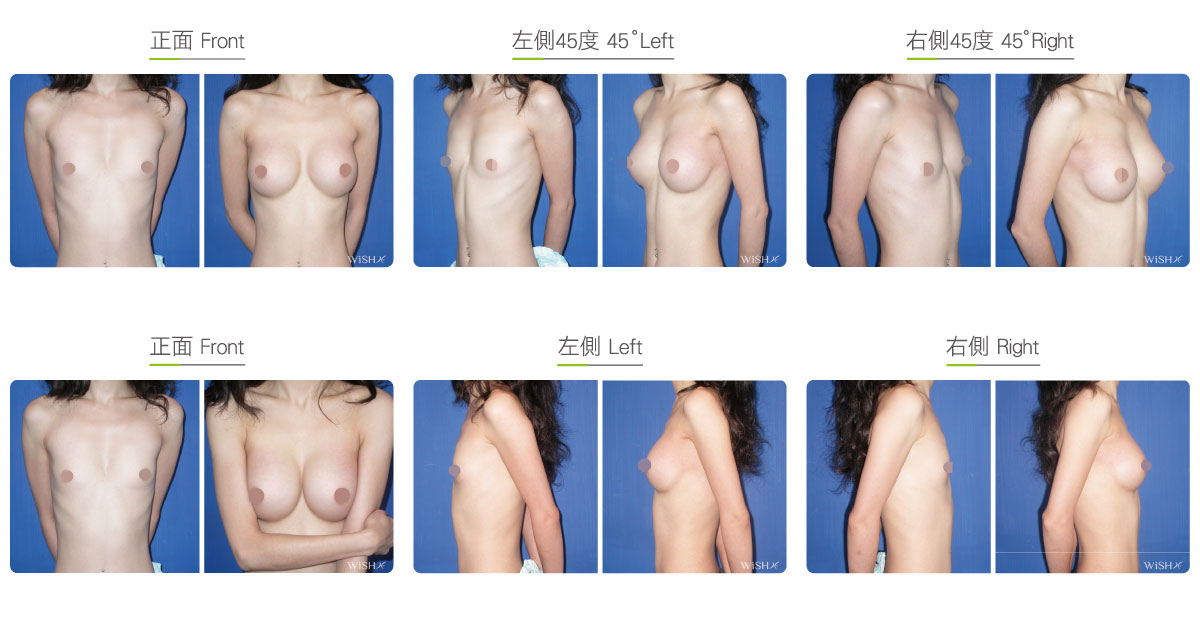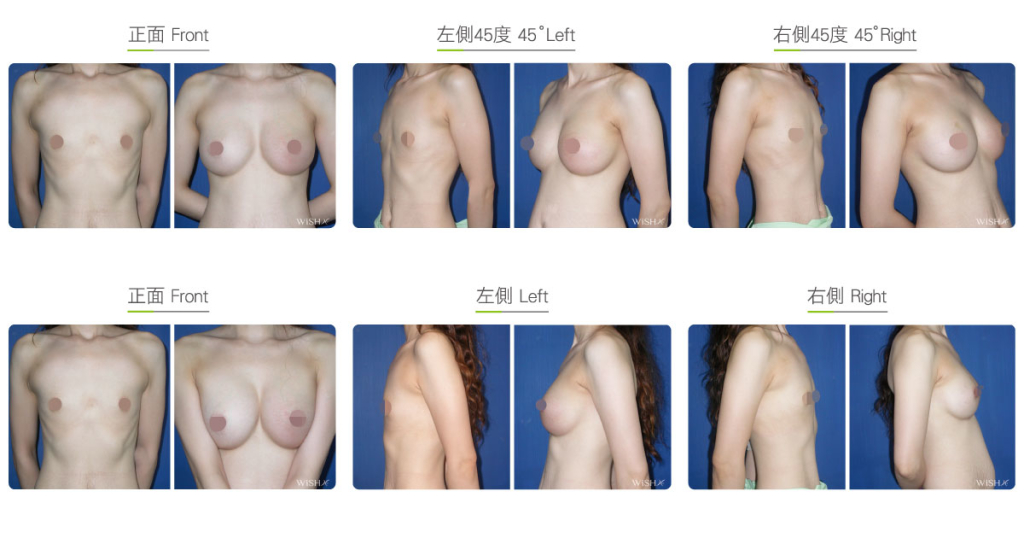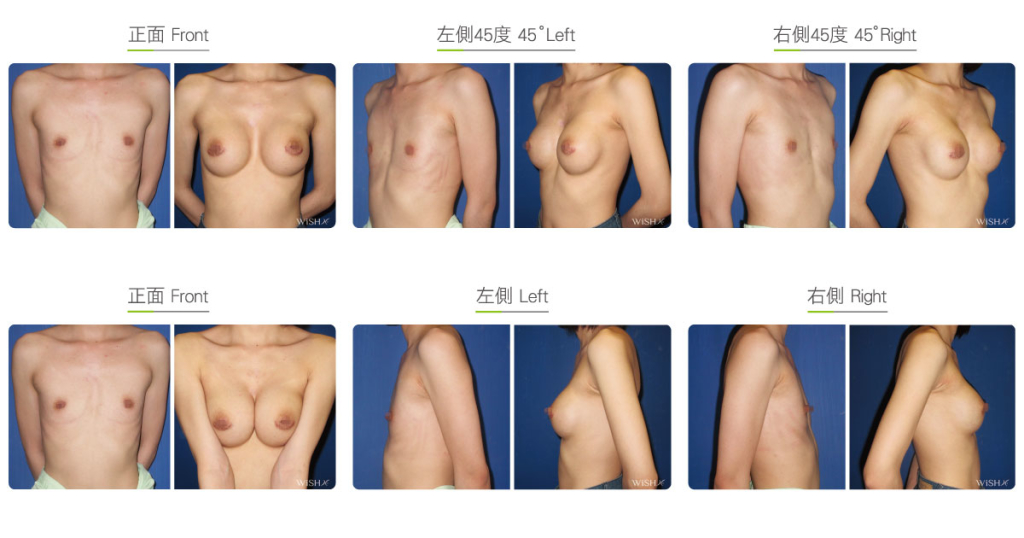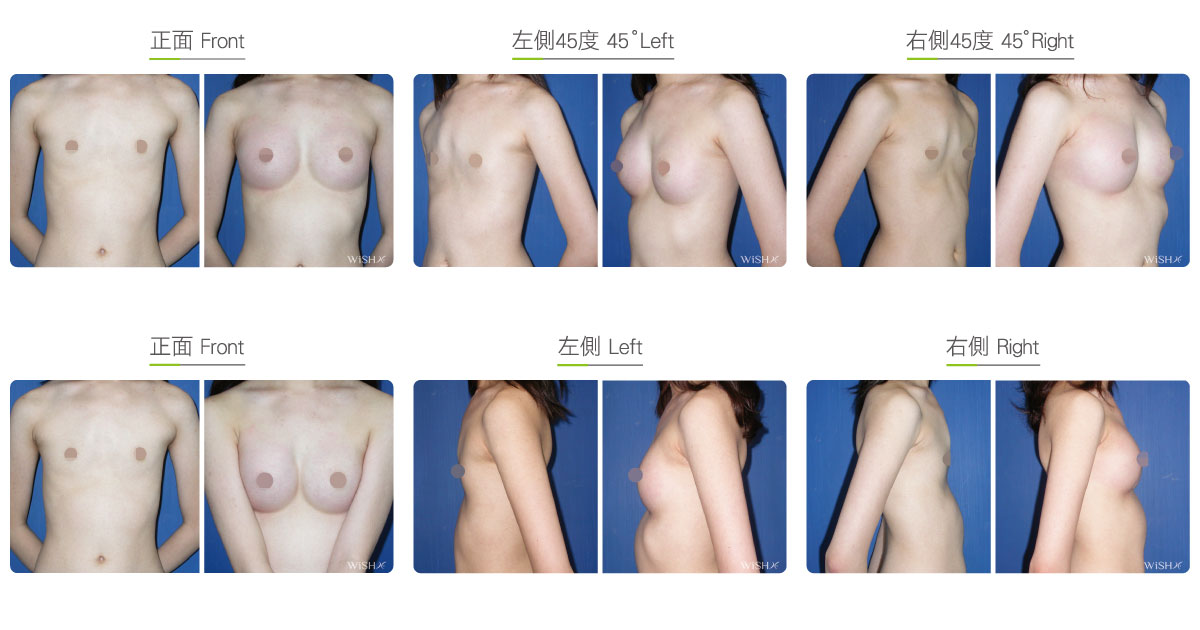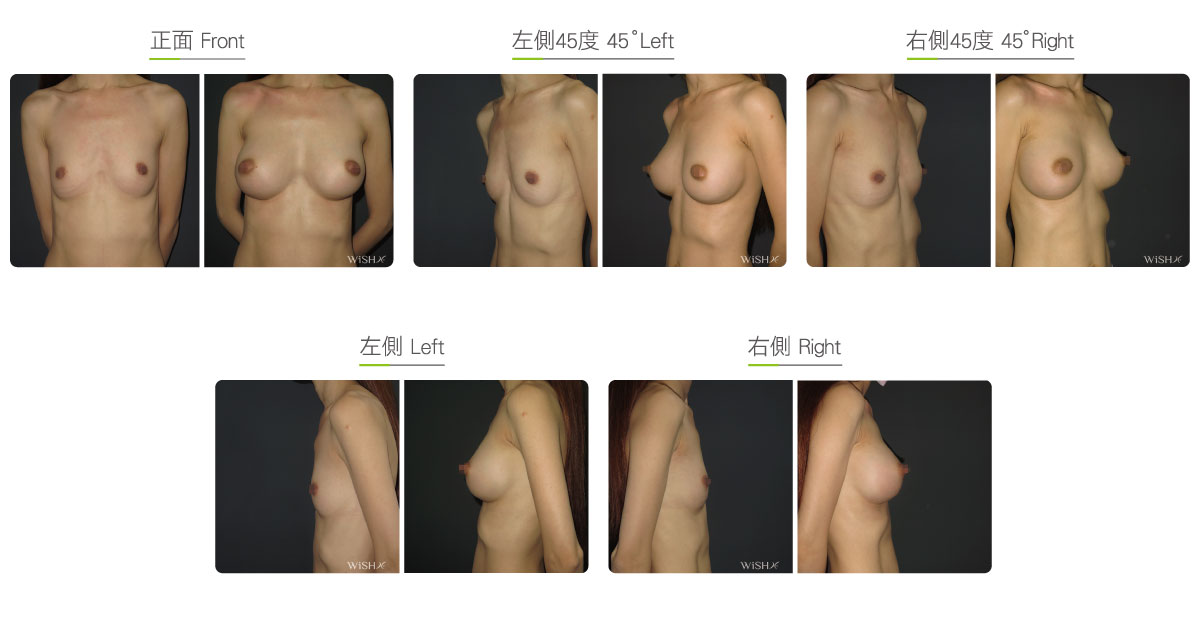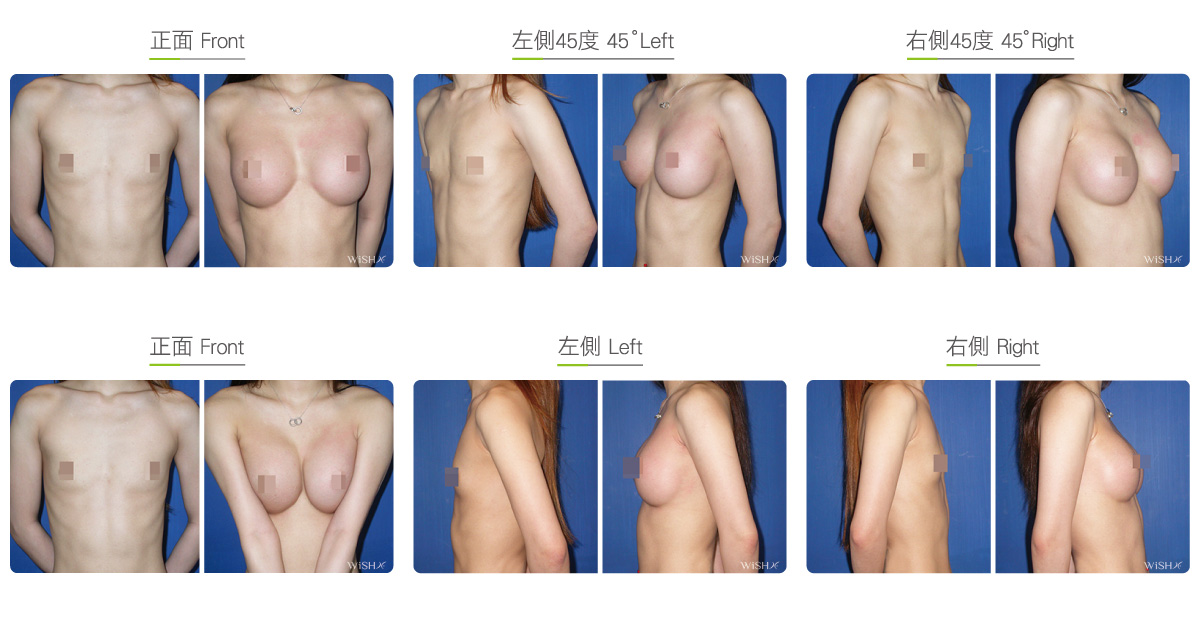Pectus Excavatum (Funnel Chest)
Patients with pectus excavatum have a chest pattern opposite to that of patients with pectus carinatum. Pectus excavatum is also a congenital chest deformity. Patients have the following characteristics:
- Disc-shaped concavity at the center of the sternum; prominent ribs
- Abnormally thin midline skin
- Minimal breast development (completely flat chested)
- Usually complicated by asymmetry in breast size or height
Patients with pectus excavatum usually have a smaller frame and incomplete or no breast development because of the compressed lung space resulting from a congenitally concave chest. Scoliosis or problems such as uneven breast and nipple height are often observed along with pectus excavatum. Therefore, a careful preoperative evaluation is essential to ascertain whether these patients’ health conditions are suitable for breast augmentation. If patients only have a concave sternum rather than problems such as oppressed cardiovascular functions, regular breast augmentation procedures can be used to improve breast appearance and hide the deformity. The following are special considerations about this approach:
- These patients normally have thin chest skin. Hence, silicone gel implants are preferred because they take into account both natural look and touch.
- Submuscular placement of implants is preferred to reduce wrinkling or rippling at the midline.
- The two pockets at the midline should not be too close to avoid the breasts from being too concentrated or subject to symmastia in the future.
Surgical conditions
Duration
- Type of anesthesia: General anesthesia
- Type of incision: Transaxillary or periareolar incision
- Recovery: Within 3 days
- Removal of stitches: 7–10 days
General instructions
No food and water on the day of surgery
- Frequent stretching should be performed for 1 month postoperatively to prevent axillary scar adhesion.
- Tasks and exercises that require excessive arm strength should be avoided, and underwired or push-up bras should not be worn for 3 months postoperatively.
- Smoking and consumption of collagen or vitamin C should be avoided for 3 months postoperatively to prevent the formation of capsules.
- Consistent and regular breast massage should be performed for 6 months postoperatively to maintain breast shape and softness.
Possible complications
- Capsular contracture
- Breast too concentrated at the midline
- Implant rippling or wrinkling at the midline
- Scar adhesion (underarms)
- Insensitive or oversensitive nipples (temporary)
- Implant leakage or rupture
Surgical advantages
-
Implants can hide the concave structure of the sternum and allow the breasts to appear normal.
-
The procedure can increase breast size as well as correct sternal deformities.
-
More centered breasts and deeper cleavage can easily be achieved.
Surgical drawbacks
-
Patients mostly have unusually tight skin; thus, the breasts would soften only with persistent massage.
-
Implants could be too centered and look unnatural.
-
Those with thin chest skin may have palpable implant edges or wrinkles.

